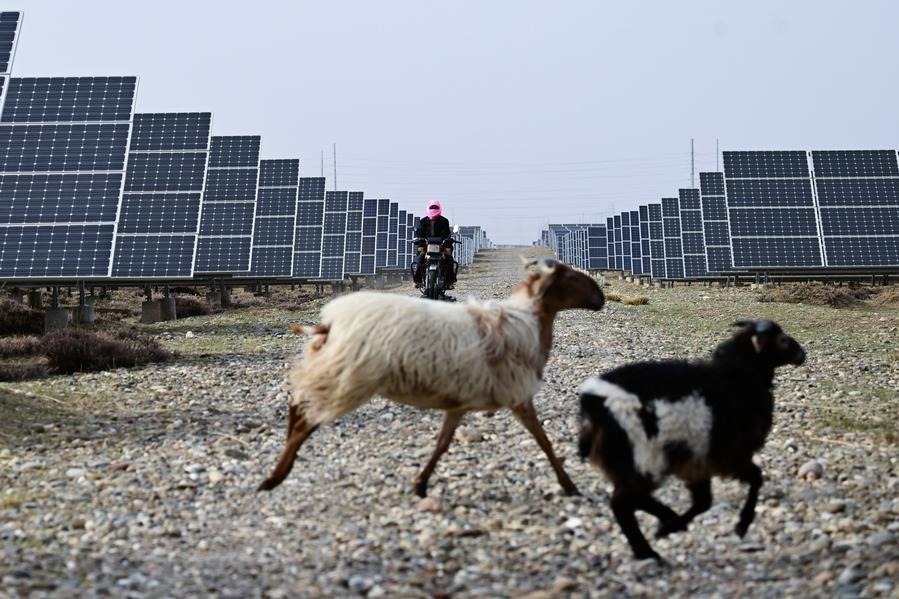Resilient Chinese economy offers ballast


The second session of the 14th National People's Congress and the just released January-February trade figures relieved the concerns of many economists watching the Chinese economy, amid negative sentiments over the nation's economy fanned in many Western media over China's economic trajectory because of the reported property price correction and local government debt.
As with the first session of the 14th NPC in 2023, the session this year set a growth target of around 5 percent for 2024, and the discussions of the economic officials at the meetings affirmed recent directives supporting the property sector and resolving local government debt.
The Chinese government has a good track record of hitting the annual growth targets set by the NPC, which has tremendous clout over the economy through the investment lever, and the only year in memory that the target was missed was 2022. The uncertainty over COVID-19 in 2022 resulted in yearly growth of 3 percent versus the target set earlier of 5.5 percent.
Since the 2008 global financial crisis, China has consistently contributed 30 to 35 percent of global growth annually and played an important role in the subsequent global recovery.
The much-publicized Chinese property correction and local government debt raised concerns in the Western sphere about how the sectors will affect investment and consumption in the country.
Most economists noted that China's real estate and local government debt are domestic problems, and the country has a high savings rate, which can finance both adjustments.
In addition, the government's focus on managing the growth trajectory this year has shifted to the more dynamic private sector and new growth engines, including new quality productive forces.
Comparing this year's Government Work Report with last year's, the government promised to focus more on regulatory and legal support for private business, with the words "private business" appearing almost three times as often in this year's report. The government also announced its commitment to promoting a stable and healthy financial market.
The country's commitment to growth through new engines such as artificial intelligence, private spaceflights, new materials and innovative drugs, in addition to other Fourth Industrial Revolution sectors mentioned in earlier years, was renewed.
China is also set to further increase research and development spending. The country has had notable success with R&D efforts driving economic growth in recent years. The electric vehicle and renewable energy industries matured so quickly that they dominate the world. China is at the forefront of many new growth areas, and providing more R&D funding will likely propel economic growth down the road.
The January-February trade figures confirm many economists' expectation that exports will be the bright spot this year. The extended Chinese Lunar New Year holiday has made combined two-month trade data a more meaningful reading of trade activity. This year's export figure shows 10.3 percent growth, hitting 3.75 trillion yuan, and the import figure increased 6.7 percent to 2.86 trillion yuan. The robust trade figures are much higher than the consensus estimate of slight growth and compare favorably with other major countries that are seeing flat to slight growth in exports.
The increase in imports is a harbinger of a steadily growing domestic economy, and vibrant exports indicate an improving, globally competitive domestic manufacturing base. A consensus is emerging that the three growth drivers of consumption, investment and exports will continue their momentum.
Economist Albert Hirschman has said that all fast-growing economies are unbalanced, and unbalanced growth is a natural path of economic development. A successful development model is one in which new growth addresses and reverses the existing imbalance in the economy. China is working on addressing the earlier imbalance with a new growth paradigm, and pundits are keenly watching the nation's new model unfold.
The new Chinese growth model counts on an innovation-driven development path and is particularly noteworthy for being environment- and resource-friendly, thanks to the new efficiency brought by the Fourth Industrial Revolution technologies.
More than 120 countries, or almost two-thirds of the world, count China as their major trading partner, while most others would also benefit from China's growth if they restrained from "de-risking "measures. A resilient Chinese economy will bring opportunities to them and serve as ballast for the global economy.
The author is a visiting distinguished senior fellow of the Cambodia Center for Regional Studies. The views do not necessarily reflect those of China Daily.

































